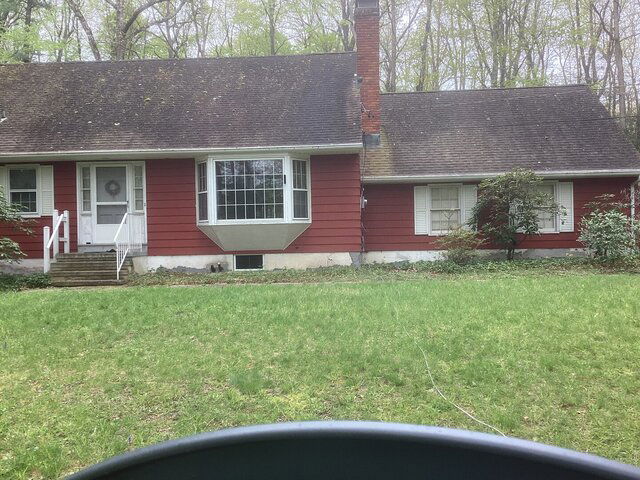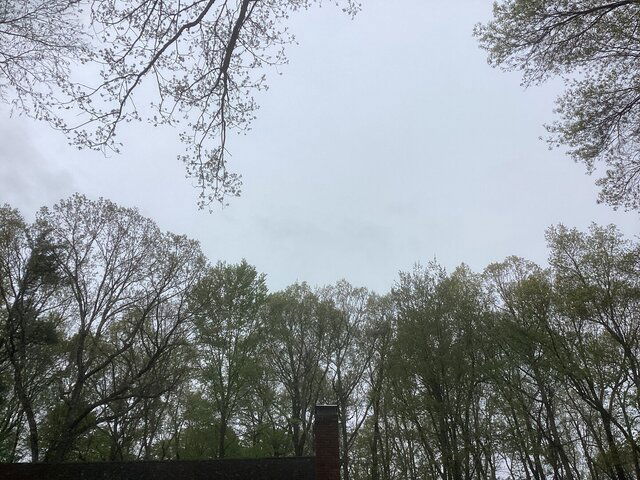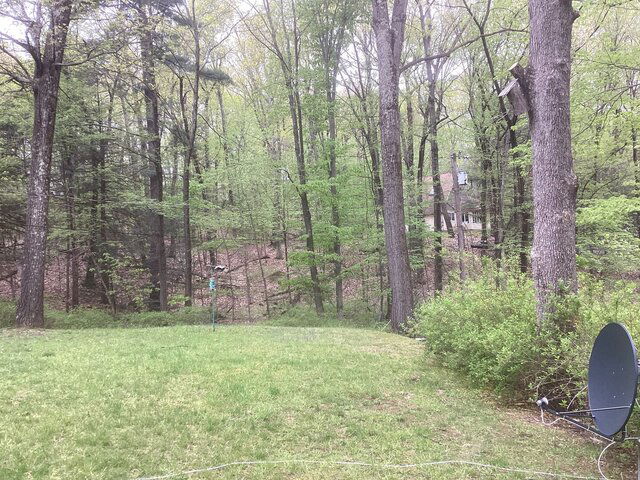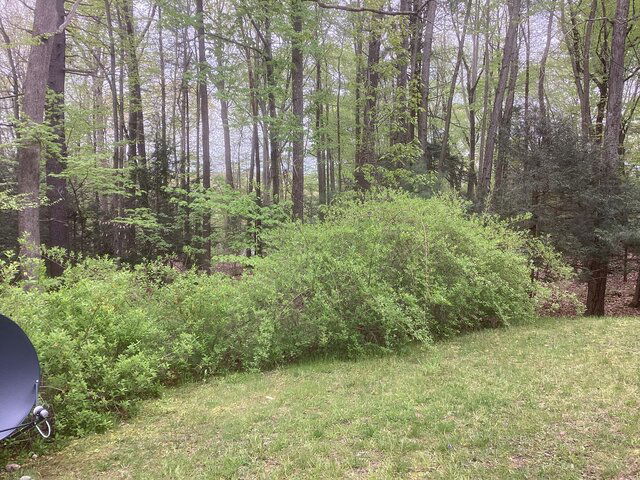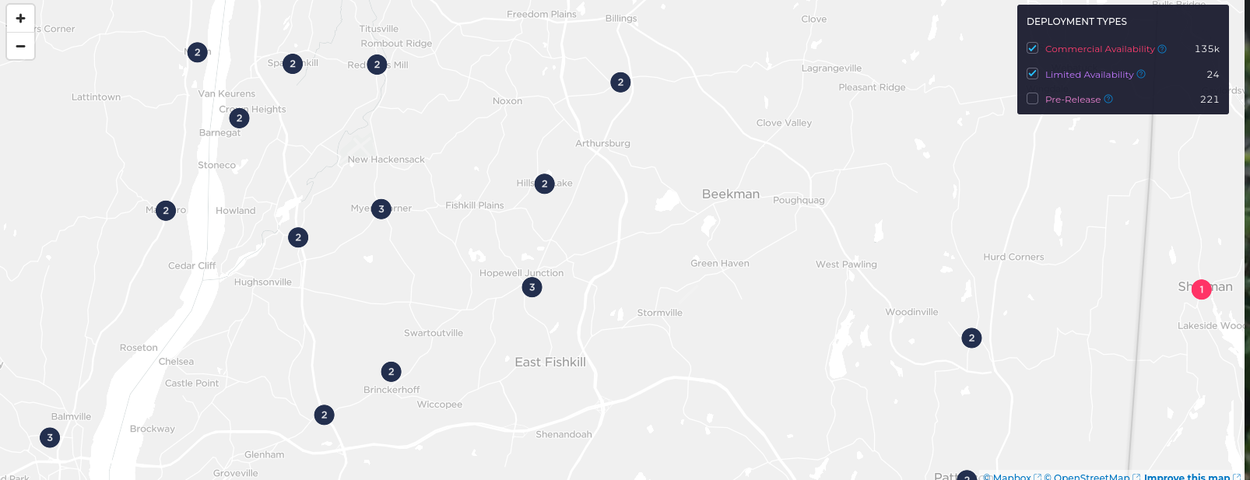I thought I'd share some image to show what my terrain looks like and the limited amount of Sky I have access to.Several ways. By knowing just exactly where your local cell towers are, then placing your dish behind a building, wall, or RF fence that can block that signal from getting into the dish, yet that doesn't interfere with aiming at satellites.
Or, knowing where your local cell towers are, then using a spectrum analyzer to look for intruding signals, confirm they exist, and putting the dish behind a building or wall that blocks that specific direction.
Things of that sort. Just be aware that in some areas, 5g microcells are actually being mounted on telephone poles right IN peoples neighborhoods. IF you have to aim through one, that's not easy to block. Though once again, IF you know where it's located, you MAY be able to install the dish pole where it'll be shielded by a wall to block that signal.
Picture #3 is what it looks like standing right behind my 90cm Ku dish. The house is 60 feet in front of me. Image #4 presents the limited view of open sky I have access to. I currently can see satellites between 77W to 103W. Photo # 2 is a frontal fiew looking directly into the dish. Behind you will notice another house. Image # 5 shows another house to the west on a hill. Picture#6 is looking east and a high hill side can be seen in the distance. Finally, image #7 shows the cul de sac I live on. I don't expect to see any 5G antennas on this street given how many trees fall on the lines and the utilities failure to trim limbs to prevent outages.
If I put up the dish I found I expect it to be placed to the right of the Ku dish from a frontal perspective.
Is there a risk of signal interference coming from behind the dish and ricocheting off the house into the dish? On the amateur 2 meter band this is possible and it actually helps receiving a repeater some 15 miles away. But in this scenario I'm using a whip antenna/ rubber ducky.




